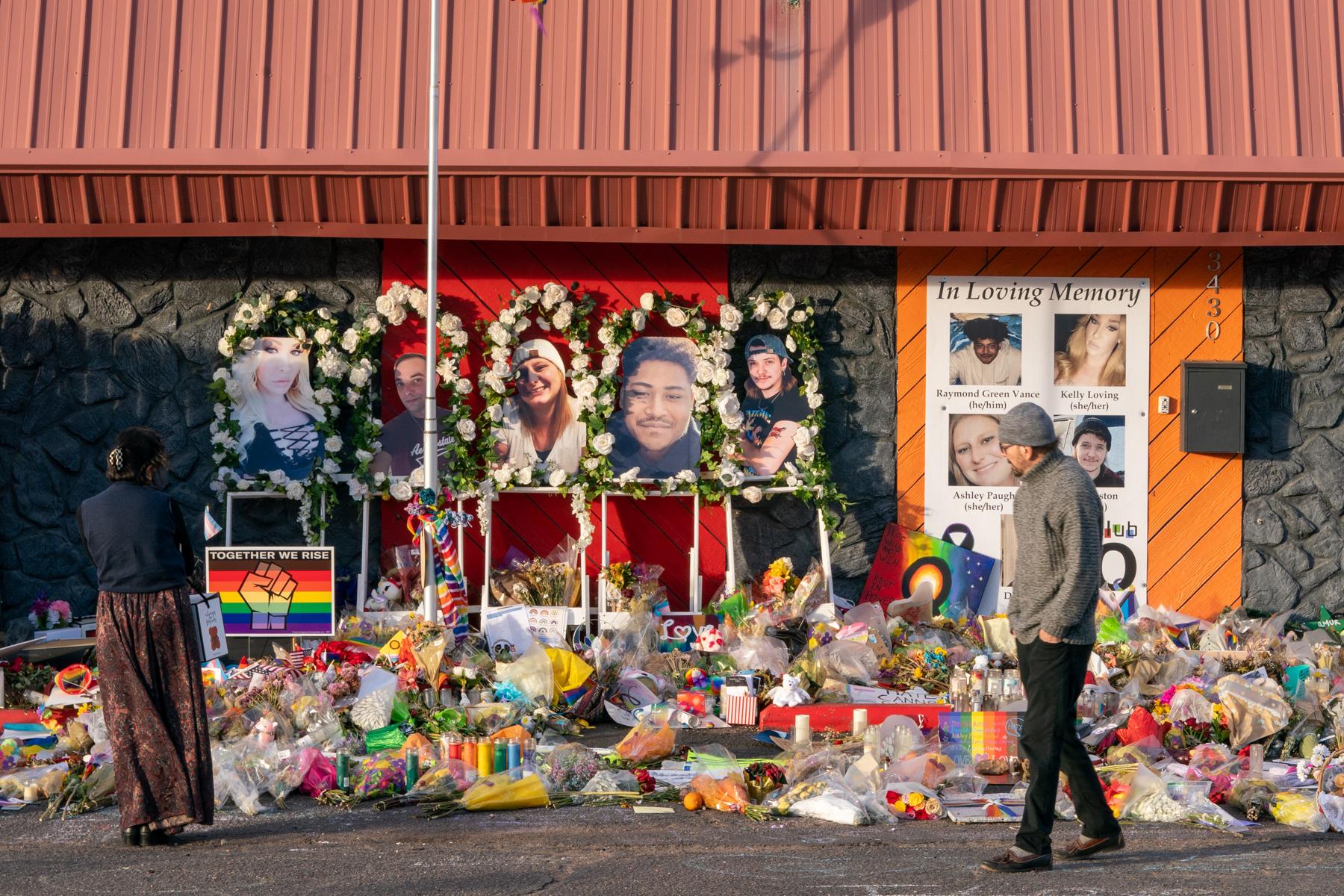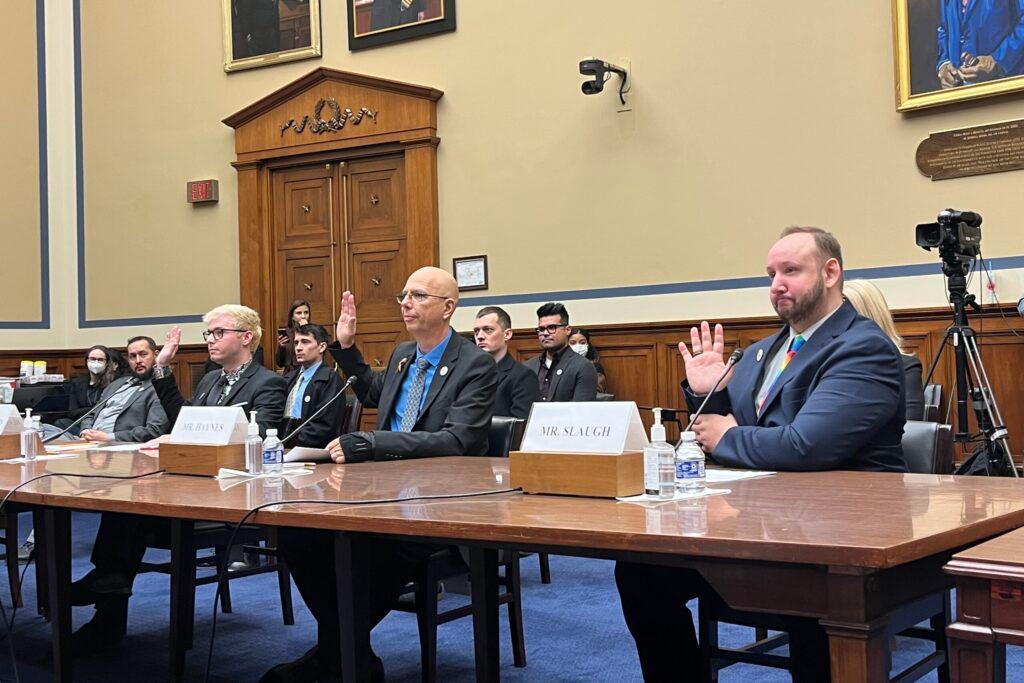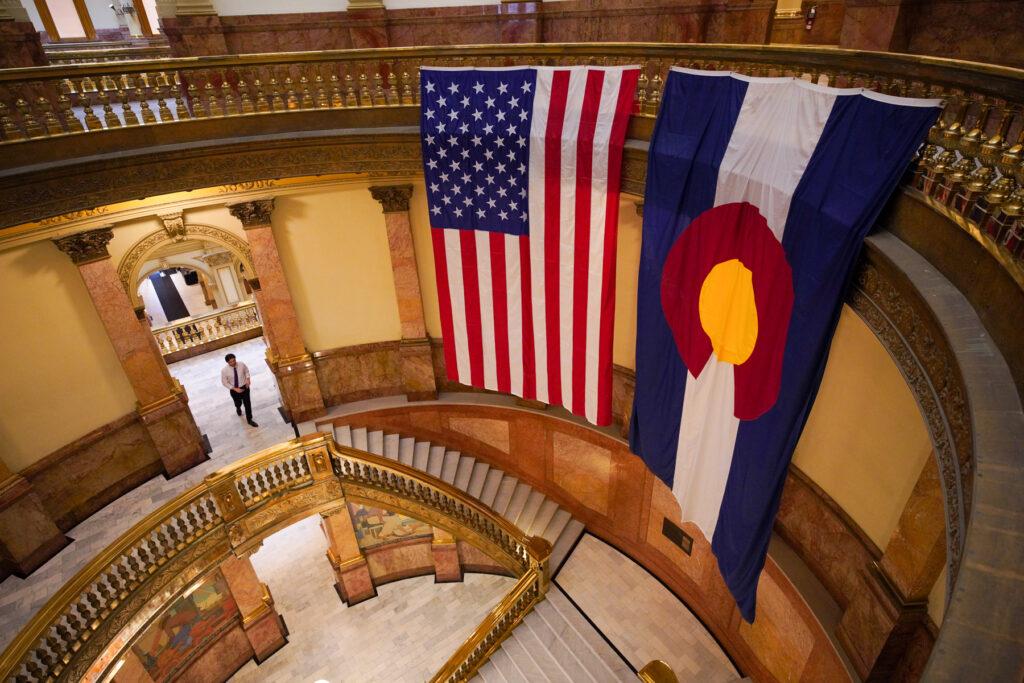
By David A. Lieb/AP
Mass shootings have commanded public attention on a disturbingly frequent basis across the U.S., from a supermarket slaying in Buffalo, New York, to an elementary school tragedy in Uvalde, Texas, to a recent shooting at a California dance hall.
Rather than provoking a unified response from elected officials, each additional shooting seems to be widening the political divide among states on who should be allowed to have guns and what types are OK.
“It’s wash, rinse and repeat with these mass shootings,” said Michael Anderson, a bartender who survived a mass shooting at a Colorado nightclub. "They happen, and then they happen, and then they happen — and then nothing gets done.”

At least nothing that has put a halt to the violence.
In Democratic-led states with already restrictive gun laws, elected officials have responded to home-state tragedies by enacting and proposing even more limits on guns — doubling down on a belief that future shootings can be thwarted by controlling access to lethal weapons.
In many states with Republican-led legislatures, recent high-profile shootings appear unlikely to prompt any new firearm restrictions this year — reflecting a belief that violent people, not their weapons, are the problem.
“Obviously, no one wants to see these tragedies occur — this loss of life — but how the problem is viewed, and therefore what the response is to that problem, is night and day difference,” said Daniel Webster, an American health professor affiliated with the Johns Hopkins Center for Gun Violence Solutions.
For the third straight year, the U.S. in 2022 recorded more than 600 mass shootings in which at least four people were killed or injured, according to the Gun Violence Archive. This year got off to another deadly start, including three California mass shootings in barely a week that killed two dozen people. A Saturday morning shooting in an upscale Los Angeles neighborhood that killed at least three and wounded four added to the grim toll. That despite the fact California already has some of the nation's strictest gun laws.
As more communities grieve, legislative sessions are getting underway in many states. Numerous gun-related bills already have been filed, but they don't all stand an equal chance of passing, or of ultimately working.
So-called assault weapon bans on certain semi-automatic weapons are among the most talked about gun-control measures. But they do not seem to be associated with reductions in deadly mass shootings, according to a study by Webster and others that analyzed more than 600 mass shootings in 45 states from 1984 through 2017. The study excluded shootings related to gangs and drugs.
A common solution from gun-rights advocates — allowing people to carry concealed guns without a permit as a means of fighting back against shooters — also seems to have little connection to the number of mass shootings, according to the study.
What did work, according to the researchers, were state laws requiring permits with fingerprint background checks to own handguns. Also effective, at least to some extent, were laws limiting large-capacity magazines for ammunition.
“The research shows that you’re much better off focusing on who has those guns rather than what the gun is,” said Michael Siegel, a professor of public health and community medicine at Tufts University who researches violence committed with guns.
Webster's study didn't include so-called red-flag laws, which allow authorities to temporarily remove guns from people posing a danger to themselves or others. But an Associated Press analysis last year found that many of the 19 states with such laws rarely use them — a trend rooted in a lack of awareness about the laws and resistance by some authorities.
AP examined how policymakers are responding to mass shootings that occurred over the past eight months in eight politically diverse states — Democratic-led Colorado, Illinois and New York; Republican-led Missouri, Oklahoma and Texas; and politically divided North Carolina and Virginia.
In Texas, Democratic state Sen. Roland Gutierrez convened a Capitol news conference this past week with relatives of some of the 19 children and two teachers killed last May at Robb Elementary School in Uvalde. They pleaded with lawmakers to enact stricter gun control laws and lift restraints against lawsuits alleging negligence by law enforcement officers and public agencies for the slow response to the massacre.
Felicia Martinez, whose 10-year-old son Xavier Lopez was killed in the attack, described weeping with grief during the holidays and urged lawmakers to raise the legal age to purchase semi-automatic rifles from age 18 to 21. The Uvalde shooter, who was 18, used a semi-automatic gun.
“An 18-year-old should not be allowed to purchase an ugly weapon,” Martinez said while wiping a tear from her eye. She added: “These laws need to be changed, and they need to be changed today — not tomorrow.”
Yet that seems unlikely. Texas House Speaker Dade Phelan, a Republican, told reporters earlier this month he didn't foresee enough support in the House to pass bills limiting access to guns. Republican Gov. Greg Abbott has said raising the purchasing age for semi-automatic rifles would be “unconstitutional,” though several states already have similar restrictions.
Instead, Texas officials responded last summer with $105.5 million for school safety and mental health initiatives. Texas took a similar approach after a 2018 shooting at Santa Fe High School near Houston, approving $100 million for school safety measures such as metal detectors, vehicle barriers and shooter alarm systems. But Abbott and Republican lawmakers resisted calls for stricter gun ownership measures.
Missouri seems similarly unlikely to enact stricter gun laws after a 19-year-old recent graduate killed a teacher, a student and wounded seven others last October at Central Visual and Performing Arts High School in St. Louis. Police said they had previously responded to a call from the 19-year-old's mother to remove a gun from his possession, but they could not do so because Missouri lacks a red-flag law.
When the shooting occurred, Janay Douglas was on the phone with her 15-year-old daughter as she fled from a school hallway.
"I’m hearing everything transpiring until she’s running, and I’m hearing her scream my name, and she hangs up the phone,” Douglas said. "I thought my daughter was dead.”
She wasn't shot, and eventually returned with other students to the school in January. If a red-flag law had been in place, “this would not have happened — at least that person, that situation, that gun, that death, all of that could have been prevented,” Douglas said.
Democratic state Sen. Karla May, who represents the area, is sponsoring legislation creating a judicial process to remove guns from people at risk of harming themselves or others. But its prospects are not good.
“I don’t think a red flag law — the way I know it to be and the way it’s been defined — has any chance of getting through the Missouri Senate, that’s for certain," said Senate President Pro Tem Caleb Rowden, a Republican.
Missouri Gov. Mike Parson, a Republican, has instead proposed $50 million for school safety grants in response to the shooting.
New gun laws also are unlikely in North Carolina after police say a 15-year-old boy killed five people in a Raleigh neighborhood last October. The gun-rights lobbying group Grass Roots North Carolina recently wrote to Republican legislative leaders reminding them of their campaign support while dismissing proposals for a red-flag law as “unconstitutional."
Republican Senate leader Phil Berger said he hadn't seen any red-flag-law proposals that would "provide a positive benefit without creating a substantial impediment to people’s constitutional right to own a weapon.” But he said lawmakers may fund an educational campaign about safely storing guns.
Oklahoma's Republican lawmakers are expected to push for looser gun laws when their session begins Feb. 6. The state experienced several mass shootings last year, including a June rampage in which a shooter killed four at a Tulsa medical facility with semi-automatic guns he had just purchased.
Republican state Rep. Jim Olsen has filed a bill to lower the age for carrying a firearm from 21 to 18 — the opposite of what gun-control advocates are pushing for in some other states.
“It’s a constitutional right,” Olsen said. "The immaturity that exists at 18 sometimes also still exists at 22. So, what do we want to do? Raise the age to 25 or 30? I would think not.”
Virginia provides an example of how changes in political control can affect a state's firearms policies.
In 2019, a city engineer killed 12 and wounded several others at a Virginia Beach municipal building. Later that year, Democrats running partly on a gun-control platform won full control of Virginia government. The next January, tens of thousands of gun owners from around the country rallied at the Capitol against proposed gun restrictions.
But lawmakers ultimately approved much of then-Gov. Ralph Northam’s gun-control package, including universal background checks on gun sales, limits on handgun purchases to one a month, and a red-flag law allowing authorities to temporarily remove guns.
Virginia experienced two more high-profile shootings last November — one at a Chesapeake Walmart and another on a bus carrying University of Virginia students. But more gun limits are unlikely, because Republicans now control the House while Democrats control the Senate.
This past week, Republicans on a House subcommittee voted down several Democratic gun bills, including measures that would have banned assault-style firearms, prohibited guns at college facilities and tightened gun-storage requirements. Republican Virginia Gov. Glenn Youngkin has said the recent shootings underscore the need for $230 million of new funding for mental health services.
By contrast, lawmakers in Democratic-led New York and Illinois moved fairly quickly to enact additional gun restrictions after mass shootings last year.
An 18-year-old shooter outfitted with body armor and a semi-automatic rifle killed 10 people and injured three others last May at a Buffalo grocery story in a predominantly Black neighborhood. Within a month, the Democratic-led legislature and governor enacted new gun restrictions, including a measure barring people under age 21 from buying semi-automatic rifles, new limits on the sale of bullet-resistant vests and armor, and tighter red-flag law provisions.
“In New York, we are taking bold, strong action." Democratic Gov. Kathy Hochul said while signing the bills.
Illinois Gov. J.B. Pritzker, a Democrat, signed legislation earlier this month spurred largely by an Independence Day parade shooting that killed seven and injured dozens in the Chicago suburb of Highland Park. The law bans the sale or possession of dozens of specific types and brands of semi-automatic guns and high-capacity ammunition magazines. It also requires people who already own such guns to register them with the state police.
A state judge recently issued a temporary restraining order blocking enforcement of the Illinois law in one of several lawsuits testing the legislative procedure used to approve it. Several federal lawsuits challenging the law’s constitutionality also have been filed.

In Colorado, members the Democratic-led Legislature are proposing a variety of new gun restrictions, two months after five people were killed at an LGBTQ nightclub in Colorado Springs and two decades after the 1999 Columbine High School massacre. The reception was lukewarm to a proposal to ban certain semi-automatic guns, but Democratic leaders have been more supportive of proposals to strengthen red flag laws and raise the minimum age to purchase firearms from 18 to 21.
Republican state Rep. Gabe Evans, a former law enforcement officer, describes the new proposals as part of "a long trend of leftist overreach that’s trying to restrict firearm access without giving a thought to the fact of: ‘Is this actually making our communities safer?’”
Anderson, who was bartending at Club Q during the shooting, believes everyone would be safer if politicians embraced a combination of greater gun control and better mental health services.
“After what I’ve been through and my friends and our community here, you know, doing nothing is not an option,” Anderson said.
Associated Press writers Acacia Coronado in Austin, Texas; Jesse Bedayn in Denver; Sean Murphy in Oklahoma City; Thomas Peipert in Colorado Springs, Colorado; Sarah Rankin in Richmond, Virginia; Gary Robertson in Raleigh, North Carolina; and Jim Salter in St. Louis contributed to this report.








